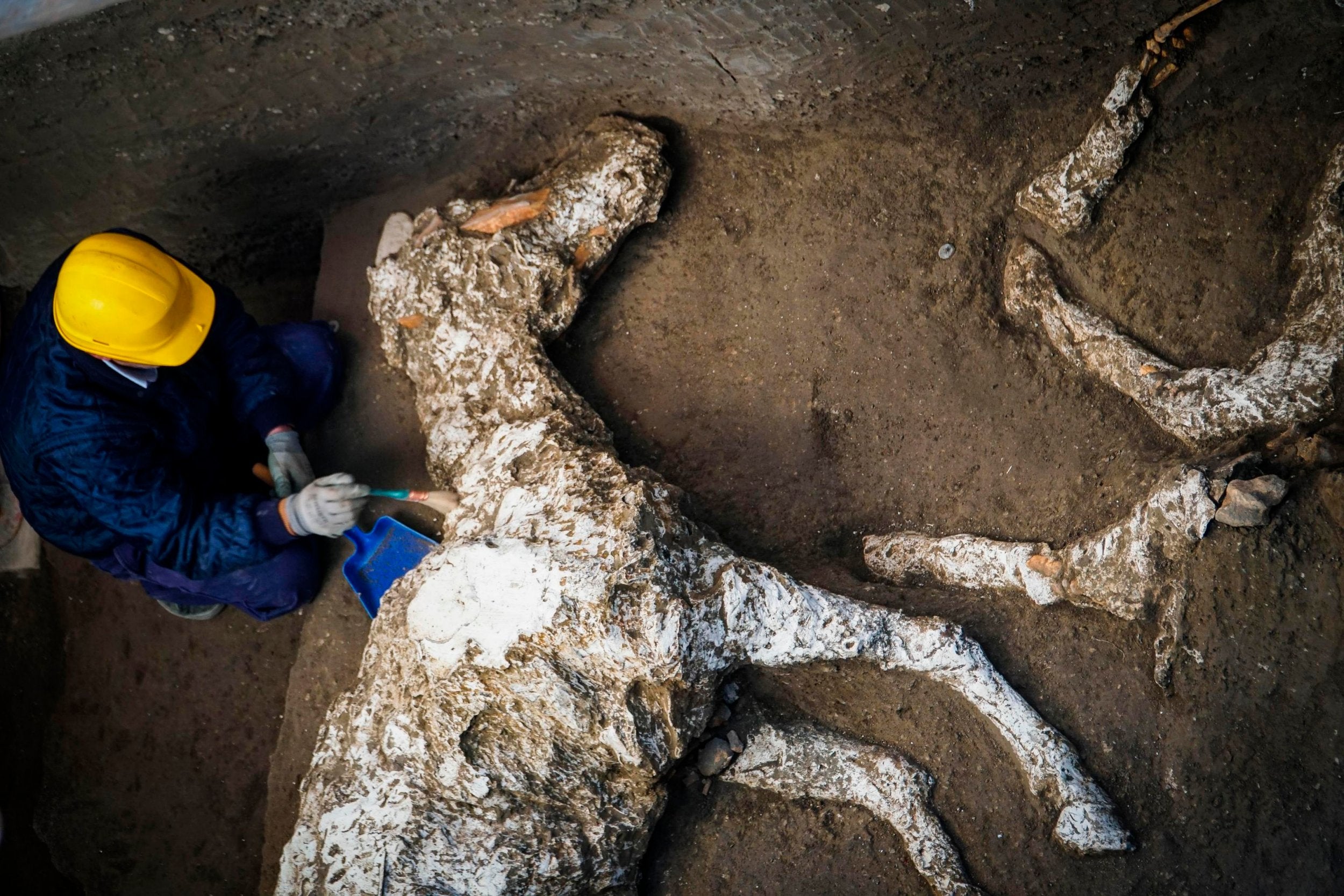Archaeologists discover petrified remains of harnessed horse in ancient Pompeii villa
Animal suffered 'fierce and terrible end' amid catastrophic eruption of 79 AD

The petrified remains of a horse still in its harness and saddle have been uncovered by archaeologists in an ancient villa outside the walls of Pompeii.
The 2,000-year-old animal, saddled up and ready to ride out, was possibly being prepared to flee the catastrophic eruption of Mount Vesuvius in 79 AD, which buried surrounding towns in millions of tonnes of ash.
The horse, which would have died of suffocation or by boiling vapours, was found alongside the remains of other horses in a stable.
They would have come to a “fierce and terrible end”, Pompeii archaeological park head Massimo Osanna said.
Mr Osanna told Italian news agency ANSA the villa belonged to a high-ranking military officer, perhaps a general, during ancient Roman times.
The villa’s terraces had views of the Bay of Naples and Capri island. The area was previously excavated, during the early 1900s, but later re-buried.
He hopes the site, named the Villa of Mysteries, will eventually be open to the public.
Join our commenting forum
Join thought-provoking conversations, follow other Independent readers and see their replies
Comments
Bookmark popover
Removed from bookmarks